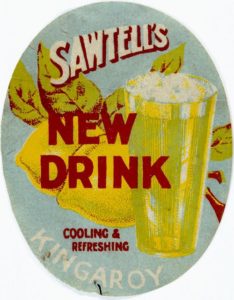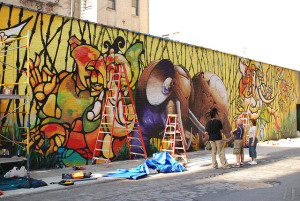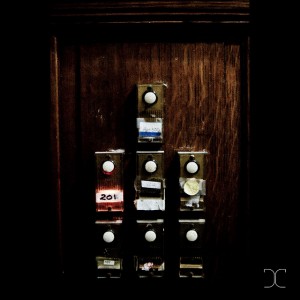Matthew Fulks, an independent filmmaker, had filed a copyright infringement suit against Beyoncé on June 8, 2016, claiming that the trailer (the Trailer) for her “Lemonade” movie (the Movie), which accompanied the April 2016 release of her Lemonade album, infringed on his copyright in the short movie Palinoia. Fulks created the seven-minute Palinoia movie in 2014, which the Seconded Amended Complaint (SAC) describes as “carefully selected but seemingly unrelated visuals in a rapid montage, with the recitation of a poem used as voiceover against a distinctive audio soundtrack.” The short movie “depict[s] the pain of a tumultuous relationship.”
On September 12, 2016, Judge Rakoff from the Southern District of New York (SDNY) granted Beyoncé’s motion to dismiss, writing a thoughtful and entertaining opinion, where Voltaire, Oscar Wilde, the Beatles, Tchaikovsky, Andy Warhol and Taylor Swift all made an appearance. The case is Matthew Fulks v. Beyoncé Giselle Carter-Knowles, Sony Music Entertainment and al., 1:16-cv-04278-JSR.
Elements of a Copyright Infringement Suit
If there is no direct evidence of copying, then plaintiff in a copyright infringement suit must prove that the defendant had access to the protected work and that there are substantial similarities of protectable material in the two works.
Plaintiff claimed that Defendants had access to his movie, as Plaintiff had submitted Palinoia to Defendant Sony/Columbia in July 2015, as part of an application for a directing job, and its receipt was acknowledged by email. Defendants did not deny this.
Plaintiff further alleged in the SAC that the Lemonade Trailer was substantially similar to Palinoia, including, but not limited to its “visual and auditory elements, visual and auditory sequences, themes, format, mood, setting, plot, and pace, all of which create a protectable total concept and feel” and that it was an unauthorized derivative work.
Judge Rakoff quoted the Second Circuit Yurman Design, Inc. v. PAJ, Inc. case, which defined substantially similar works as works which an “ordinary observer, unless he set out to detect the disparities, would be disposed to overlook them, and regard [the] aesthetic appeal as the same,” and the Second Circuit Peter F. Gaito Architecture case, which explained that the courts apply the substantial similarity test by “compar[ing] the contested design’s total concept and overall feel with that of the allegedly infringed work… as instructed by our good eyes and common sense.”
No Substantial Similarity in the Visual Elements
Plaintiff alleged that the Trailer contained nine visual elements substantially similar to Palinoia’s visual elements. These elements are (1) a head down near a graffiti wall; (2) red persons with eyes obscured; (3) parking garage; (4) stairwell; (5) black and white eyes; (6) title cards screen; (7) grass scene; (8) feet on street; and (9) side-lit ominous figures. The SAC has side-to-side screenshots from both works illustrating the allegations.
Judge Rakoff engaged in an analysis of these nine elements, but was not convinced that the Trailer infringed Palinoia. Instead, “[o]nce stripped of unprotected elements and scenes a faire, these scenes from Palinoia and the Trailer and Film have very little in common.”
Not the Same Aesthetic Feel
Judge Rakoff was not convinced as “Plaintiff’s alleged similarities consist almost entirely of clearly defined ideas not original to plaintiff and of stock elements with which even a casual observer would be familiar. Moreover, to the very limited extent that there are even any superficial similarities, these are overwhelmed by the works’ vastly different creative choices and overall aesthetic feel.”
Judge Rakoff quoted the SDNY LaChapelle v. Fenty case, where the court explained that “[o]riginality in rendition may reside in the photographer’s selection of lighting, shade, lens, angle, depth of field, composition, and other choices that have an aesthetic effect on the final work.” In other words, you can have the idea of filming a parking garage, a grass scene or a distressed person heads down near a graffiti wall, but it is the expression of this idea which is protected, not the idea itself. As both works had been expressed in different ways, there were not similar.
For example, as explained by Judge Rakoff, when analyzing the first visual element claimed as original by plaintiff, a person seen head down near a graffiti wall, the concept of a “state of distress” is an unprotected idea, and it “flows naturally and necessarily that a distressed character would be leaning (as opposed to dancing) against something stable (as opposed to delicate) and that his or her head would be down (as opposed to up.)” Instead, what was essential as to whether there was infringement is the comparison of the way the two scenes were filmed. Because the scenes were aesthetically different, there was no infringement.Judge Rakoff analyzed all the nine visual elements in turn, and found that none of them had the same aesthetic than the Trailer. Therefore, he found them not similar with the Lemonade Trailer scenes.
No Substantial Similarity in the Auditory Elements
Plaintiff also alleged in his SAC that both works included “the voiceover of a narrator reciting poetry over the sounds in the background” and that the audio sequences of both works were substantially similar, as they both followed “a similar pattern in which harsh noises are separated by calmer sounds in a substantially similar time table” and both included “crescendos and decrescendos.”
But for Judge Rakoff, “no reasonable jury, properly instructed, could find infringement based on plaintiff’s… alleged similarities… [in] the works’ audio… The idea of juxtaposing poetry and disharmonious sound is not protectable.” Plaintiff must prove instead that the way he expressed this idea, such as his choice of poetry and sound, has been copied. However, Plaintiff did not prove this in this case.
Not the Same Total Concept and Overall Feel
For Plaintiff, the mood, setting, pace, and themes of both works were substantially similar which contributed “to the overwhelming similarity of total concept and feel.” Both moods were “heavy, dark, and angst-laden.’” Both settings included similar environments, such as an empty dark parking garage, grass field, and a stairwell. The pace of both works was “a rapid procession of short scenes or montage, interspersed with notable intermittent pauses through exaggeratedly slow scenes.” Also, both works had different themes “destruction, alienation, heartbreak, and chaos versus order.”
But Judge Rakoff noted, somewhat ironically, that:
“[a]pparently intent on exploring the boundary between idea and expression, plaintiff alleges that the works share the same narrative theme (“a struggle of a relationship”) and the same aesthetic mood and pace (“a pattern of successive montage of abstract scenes, with unknown or unclear meanings, pieced together in ‘short takes'”). These alleged similarities fall firmly on the side of unprotected ideas. The “struggle of a relationship” is a concept familiar to us all, and plaintiff is not the first individual – or artist – to comment on it. See, e.g., R. Hart-Davis, The Letters of Oscar Wilde 621 (1962) (“[H]earts are made to be broken”); Taylor Swift, “I Knew You Were Trouble”(2012).”
Plaintiff argued that the “race of the characters in the [Film] is irrelevant to the total concept and feel of a film about relationships.… Judge Rakoff wrote that the Lemonade Movie is not just about relationships, but instead:
“depicts the protagonist’s journey from a particular perspective: that of an African-American woman in a predominantly African-American community… The Film repeatedly references and dramatizes generations of African-American women, and in the background of one scene, the observer hears an excerpt from a speech by Malcolm X to the effect that the Black woman is the most “neglected” person in America…. This all takes place against what defendants accurately characterize as a “Southern Gothic feel.”… The settings transition between areas of New Orleans, the abandoned Fort Macomb, and an Antebellum plantation. These significant differences in characters, mood, and setting further distinguish the total concept and feel in the [Lemonade] Film from that in Palinoia.”
Plaintiff also argued that both works “portray a struggle of a relationship; the reasons for such struggle are unclear and irrelevant.” But for Judge Rakoff, “[t]his is like saying that Casablanca, Sleepless in Seattle, and Ghostbusters are substantially similar despite the different motivating forces behind the struggles there portrayed (Nazis, capitalism, and ghosts, respectively).”
Trailer, Movie, Album
Judge Rakoff remarked “that the differences in total concept and feel are initially more pronounced between Palinoia and the [Lemonade] Film than between Palinoia and the [Lemonade] Trailer” but that “the difference in overall concept and feel between Palinoia and the [Lemonade] Trailer still overwhelms any superficial similarities.”
I was surprised to read that Plaintiff claimed that the Trailer for the Lemonade Movie had infringed his own short movie, as it was meant to be a teaser announcement for both the Movie and the Lemonade album. As noted by Judge Rakoff, the Lemonade Movie “marks the protagonist’s progression through thematic headings, and narrates it with songs from the Lemonade album.” The Trailer shows scenes of the 58-minute Lemonade Movie, which itself follows the sequence of the Lemonade album, which itself narrates a story, from one song to another. There are several layers of creation behind the trailer, the originality of which stems from both the originality of the Lemonade Movie and the Lemonade album. The hurdles of proving substantial similarities between the trailer, a derivative work of an original work featuring another original work, and the short film, an original work in itself, was therefore very high.
This post was originally published on the 1709 Blog.







